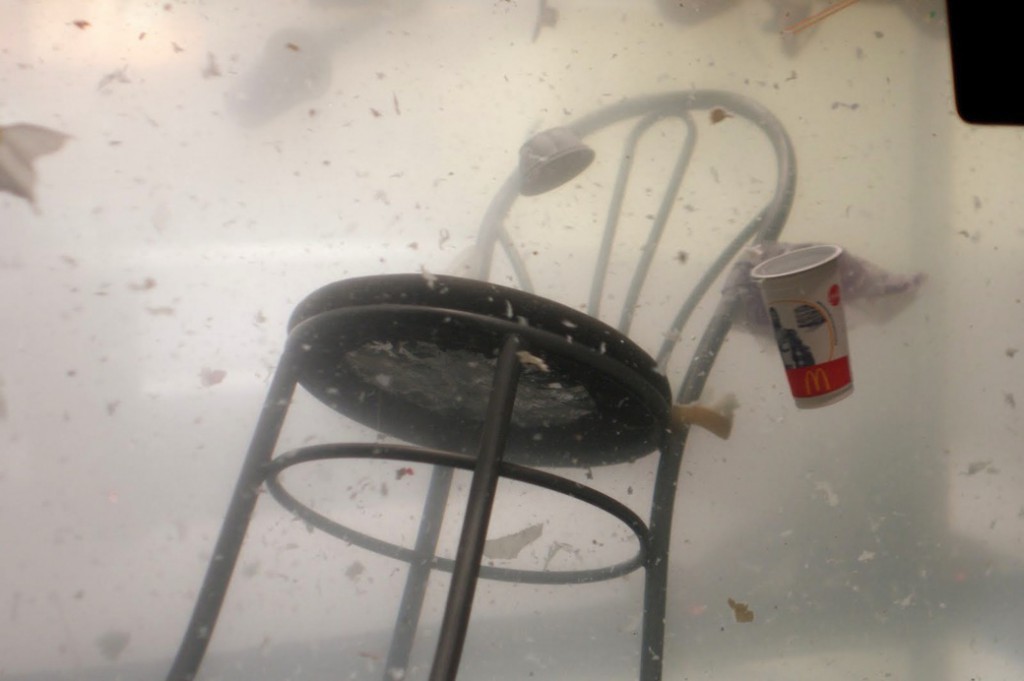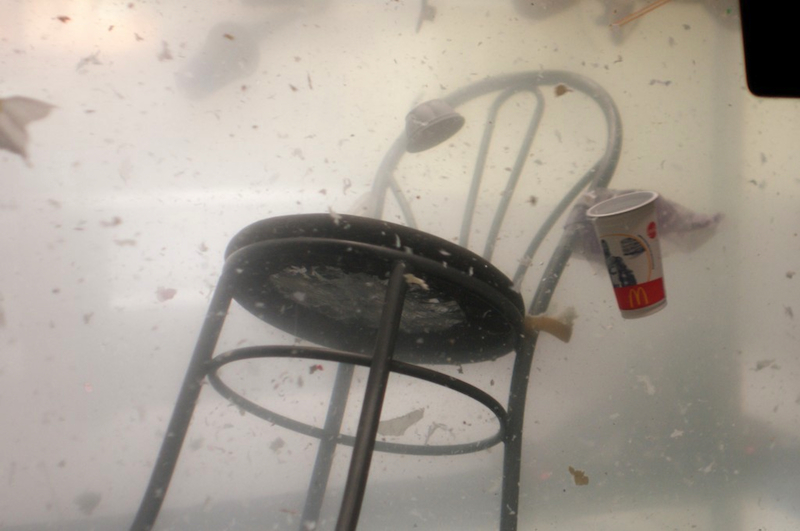Little disasters pop up in our lives whether we notice them or not. They may be as mundane as getting stuck in traffic or a cycle of negative thoughts that manifest as poor decisions. Can these be avoided? Or is it that the tides of chance turn, and not everything is kismet? In considering this question and Art21 Magazine’s theme of failure, I turned to Phong Bui and Pinar Yoldas, artists who are considering disaster on much larger scales.
Bui, publisher of the Brooklyn Rail, is curator of the Come Together Hurricane Sandy anniversary show at Industry City in Sunset Park (on view through December 15, 2013). The enormous exhibition brings together more than one hundred fifty artists. Like the way Hurricane Sandy threw itself at New York City, Bui’s Come Together attempts to throw back the energy of the art community now, nearly one year later—and Bui did it all in three months. “It was like creating a Woodstock for the art world,” says Bui.1 “It seems chaotic, last minute, and ultimately it is about love and peace, not art and politics.”
Some artists in Come Together, such as Dustin Yellin and Benjamin Keating, lost their entire studios to the ferocious waters. But bringing together only artists who were devastated would have been too much like a memorial. For this reason, Bui and his curatorial team organized the exhibition with a mindset of solidarity, inviting artists whose studios were not harmed to join those who were struck by disaster. The show includes established members of the New York City art community as well, such as Lynda Benglis, Richard Serra, and Lisa Yuskavage.
Bui notes that he lost more than twenty years of work to the storm, with his studio flooded up to six feet deep. For him, the Come Together project has been energizing. “It gives me a greater admiration of how artists have a resilient ability to retain their spirits,” Bui says. “Artists are really citizens of the world, and they don’t make compromises. They live through incredible poverty and difficult times to do their work.”
Artist Pinar Yoldas recently received funding for a project called Ecosystem of Excess, which attempts to create a post-human ecosystem. It begins with the Pacific Ocean trash vortex, a swirling nexus of plastic waste first observed in 1985; estimates of its size range from 700,000 square kilometers (270,000 square miles) to more than 15,000,000 square kilometers. The vortex is symbolic of our rampant consumerism under late capitalism and cultural disaster at a global scale. “I am starting with this bacteria and speculating about all of these life forms [that] flourish in this highly toxic environment,” Yoldas says.2 “But I have also found this really horrible thing about plastic: plasticizers. We all have this stuff in urban centers, and it’s causing [a serious amount of] health problems for humans. It’s taken me to a dark place, actually.”
In her research, she has learned of new life forms existing in these environments; this is not to condone late capitalism’s excesses but rather to consider what is happening as a result. “A most interesting study is by Dr. Zettler of Woods Hole Oceanographic Institute, [whose] group found over one thousand bacteria that thrive in plastic waste,” says Yoldas. “This new microbial community is called the plastisphere.” Yoldas’s project works against a utilitarian, anthropocentric approach that considers life forms only in relation to their usefulness for humans. In her project, the worldview of this ecosystem of excess will be created through diagrams and models. Yoldas is building a generative animation using Java, and will showcase the plastisphere creatures in an online component that will be available by late December 2013.
By that time, Bui’s exhibition will have closed, but it is planned to continue in the future, to occur annually. Bui says that he may not be the curator in future years, and the show could be much smaller in scale. Come Together seeks to work through the collective trauma felt by the New York City art community in the wake of the environmental disaster of Hurricane Sandy. Meanwhile, Yoldas’s project considers cultural disaster at a global scale: while as dramatic as Hurricane Sandy, the effects are occurring on an insidious, microscopic level, in our waters, bodies, and bloodstreams—our personal ecosystems.
________
1 This and following quotes taken from the author’s conversation with Bui on October 3, 2013.
2 This and following quotes taken from the author’s conversation with Yoldas on October 16, 2013.

